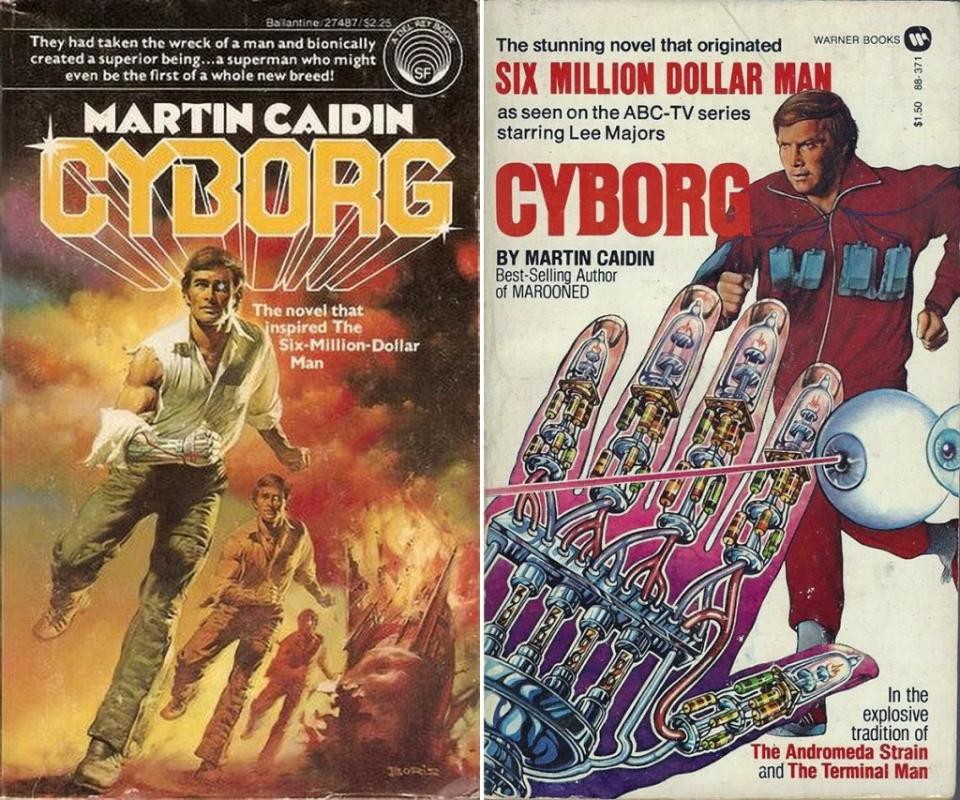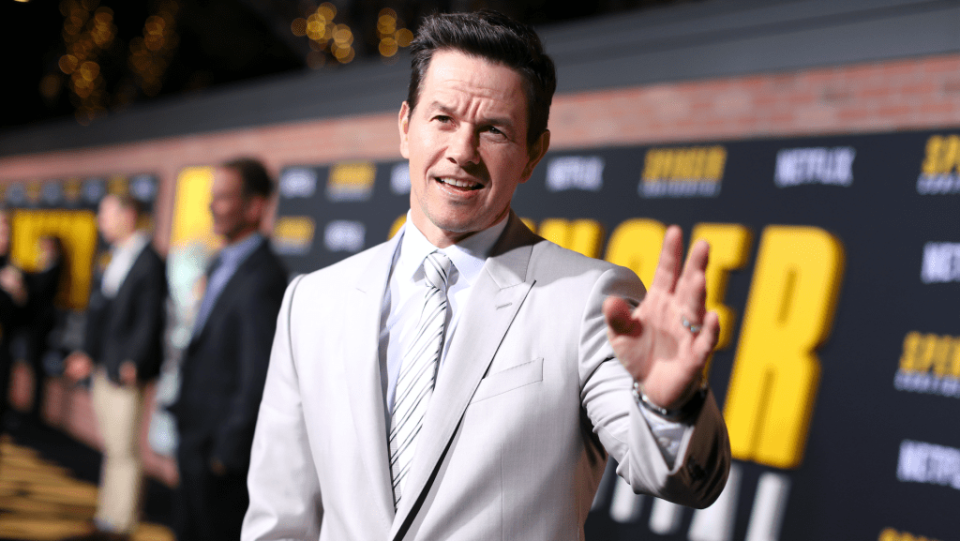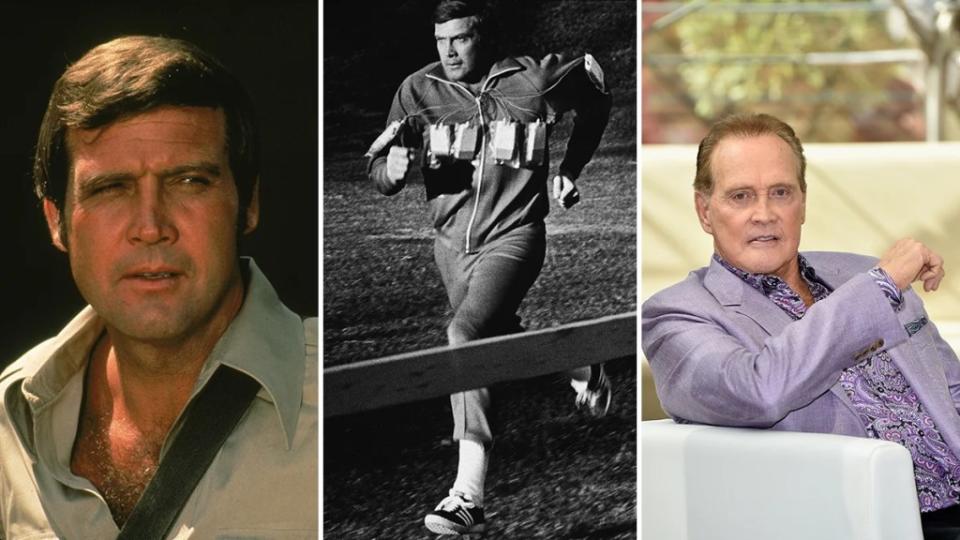How Old Is Too Old? Inside the Battle to Remake the ‘Six Million Dollar Man’ | Exclusive
- Oops!Something went wrong.Please try again later.
- Oops!Something went wrong.Please try again later.
- Oops!Something went wrong.Please try again later.
- Oops!Something went wrong.Please try again later.
It was 50 years ago that the “The Six Million Dollar Man,” a TV series about a former astronaut rebuilt with bionic limbs that give him superhuman strength, debuted on ABC.
The series starring Lee Majors became a cultural phenomenon, running for nearly 100 episodes from 1974 to 1978 and inspiring six follow-up television movies, “The Bionic Woman” spinoff and a cottage industry for licensed merchandise that included everything from action figures with an exploding briefcase to board games and comic books.
And yet since the late 1990s, when a movie version of “The Six Million Dollar” man was first plotted, no producer or studio has successfully remade the show — partly because of competing interests over movie rights.
For a decade the project has been locked in with Mark Wahlberg, now aged 52, who seems determined to hold on to his dream to star in a remake. (Majors was in his early 30s when the show was a hit.)
Thus far Wahlberg doesn’t have any takers. His agent Ari Emanuel owns the domestic movie option, which expires in 2025, according to insiders. Fans of the franchise say that’s a shame.
“In a world of diminishing IP, the $6 Million or the $6 Billion Man is reflective of the properties that are still out there and available,” a producer previously associated with the project wrote TheWrap.
“This one has potential because the IDEA is so strong,” the producer added. “The opening of the show said ‘We have the technology’ and boy do we now. If a visionary uses it to reflect society as it is today, the concept can thrive and be amazing. That’s not gonna happen with a 52 year old actor now known for Netflix rom coms and hamburgers.”
To Mike Avila, a TV producer and the author of “The Art and Making of Aquaman,” the five-decade struggle to exploit “The Six Million Dollar Man” into a modern-day movie “is a colossal failure by Hollywood to mine one of the most important pop culture properties of the last half-century,” he wrote in an email to TheWrap.
“It’s mind boggling that here we are in 2024 and we still haven’t seen a ‘Six Million Dollar Man’ (or Six Billion Dollar Man) movie adaptation,” Avila said. “I’m not sure there’s ever been as big a TV series that has been mired in development hell like this.”
By the late 1990s and early 2000s, Hollywood was cashing in on 1970s nostalgia, spitting out movie versions of “The Brady Bunch,” “Starsky & Hutch,” “The Mod Squad” and “Charlie’s Angels,” which starred Majors’ second wife Farrah Fawcett in the original Aaron Spelling TV series. “I’d argue that the ‘Six Million Dollar Man’ had the largest pop culture impact of any of those properties,” Avila said, “and yet it got lost in the mix.”
The failure to rocket the show into the future came down to “bad timing and bad ideas,” Avila added. But it serves as a cautionary tale for Hollywood producers looking to adapt legacy TV properties.
From ‘Cyborg’ to ‘The Six Million Dollar Man’

“The Six Million Dollar Man” was loosely adapted from the novel “Cyborg” by American writer Martin Caidin and developed for television by legendary producer Glen Larson. Caidin’s novel created the Steve Austin character, an astronaut and test pilot who has a near-fatal rocket crash and then is saved through a secret government program that replaces parts of his shattered body with bionic limbs and a bionic eye.
“Gentlemen, we can rebuild him, we have the technology…to make the world’s first bionic man,” a government agent says in the show’s opening voice over. “Steve Austin will be that man. Better than he was before. Better. Stronger. Faster.”
The original television pilot movie in March of 1973 was the tenth most-watched program that week, according to Nielsen. Two more TV movies followed. They were darker in tone than the series that debuted in 1974. Larson’s show was campier, featuring villainous characters like the Wookie-like “Bigfoot” and slow-developing action scenes shot in slow-motion punctuated by cheesy sound effects. But the show worked, for the time, and “Six Million” ran for five seasons.
Caidin died in 1997, but his estate has continued to control the underlying rights to “The Six Million Dollar Man.”
The effort to make a movie started in 1995, when “Clerks” director Kevin Smith penned a “Six Million Dollar Man” screenplay for Universal Pictures. Smith later turned his script into a comic book in 2011 under the title, “The Bionic Man.” A press release at the time said it was licensed by NBC Universal Television Consumer Products Group.
Six years later, Michael Zoumas, a former senior VP of production and development at Bob Weinstein’s Dimension Films, tried to take the project further. Zoumas made a deal with Jeff Mackler, the lawyer for the Caidin estate, along with Weinstein and two other executives.
After the ink dried, the Weinstein team realized that the estate only claimed domestic, not global, movie adaptation rights, which were tied in with the original show’s place within the vast Universal Television empire. (Lawyers associated with the rights would not disclose the price tag on the deal.)
Now, Dimension had to cut in Universal Pictures, who controls the international rights to “The Six Million Dollar Man.” Universal granted approval moving forward. (Universal declined to comment for this article.)
Even with the Dimension agreement in place, “The Six Million Dollar Man” failed to advance. Big stars like Will Smith and Jim Carrey, and filmmakers like Bryan Singer and Todd Phillips, approached the project before ultimately deciding to move on.
All the waffling was costing Bob Weinstein. At one point, fearing he would lose the rights, the executive paid more than $750,000 to purchase the domestic rights outright from the Caidin family. The decision proved disastrous. After seven years without a movie, the rights reverted to the family, according to insiders with knowledge of the situation. That led Weinstein to renew the option on a yearly basis, with fees reaching $250,000 for these short-term extensions.
Enter Marky Mark and the super agent

In 2014, Wahlberg, a childhood fan of the TV series, became attached to the project and was set to portray Steve Austin.
Weinstein attached Argentinian filmmaker Damián Szifron, whose revenge movie “Wild Tales” had just been nominated for the Best Foreign Language Feature Oscar, to direct “The Six Million Dollar Man.” Over the next two years, with the Weinstein Company embroiled in scandal related to Harvey Weinstein, Bob Weinstein took the property to the American Film Market to try and drum up interest. His partner in crime: Endeavor CEO Ari Emanuel, who represents Wahlberg.
In 2017, then-Warner Bros. chief Toby Emmerich agreed to take on the project. He paid back Weinstein millions of dollars in accumulated development costs, according to insiders. Szifron had left the project by this point. In 2019, LAIKA head Travis Knight, who had just directed the “Transformers” spin-off “Bumblebee,” boarded the project. It wound up being just another glimmer of false hope.
I’m not sure there’s ever been as big a TV series that has been mired in development hell like this.
Mike Avila, a TV producer and author, talking about “The Six Million Dollar Man”
Warner Bros. paid for one final option extension through July 13, 2021, although by this point Emmerich had already put the movie into turnaround. Emanuel, Endeavor and Knight desperately hunted for a new home for the project. But they couldn’t find any takers because nobody wanted to make the movie with Wahlberg. “Lee Majors was never going to win any awards for his fast speed and versatility, but he had something – he had an every guy, real-world quality that anchored the material,” Matt Zoller Seitz, editor-at-large at RogerEbert.com and television critic for New York Magazine, told TheWrap. “Mark Wahlberg just doesn’t do it for me.”
The next day, on July 14, the rights returned to the Caidin estate, according to insiders, and Warner Bros. ended up eating more than $9.25 million in development fees.
At this seeming dead-end, Emanuel turned to copyright attorney/fixer Marc Toberoff, who deals in highly sought after (and, oftentimes, deeply complicated) IP cases. Toberoff has also structured his agreements so that he still makes money in clients’ post-termination licensing deals – his name appears on everything from the 3D “Piranha” remake to a new version of “Roots” and the recent Hulu remake of Clive Barker’s “Hellraiser.”
The Caiden estate makes a deal
TheWrap has exclusively learned that last year the Caiden estate made a deal with Emanuel and Toberoff for $250,000 upfront for an 18-month option on the property. Both Toberoff and a rep for the estate declined to confirm the fees and terms of the option. But insiders said that Emanuel funded Toberoff’s payment to keep his client Wahlberg’s dream project alive. While Wahlberg has publicly said that Skydance is in the mix, TheWrap can confirm that Skydance and Wahlberg do not have a deal in place, countering the actor’s claims from December.
Representatives for both Emanuel and Wahlberg have not responded to The Wrap’s request for comment. Skydance declined to comment.
Further complicating matters is the fact that in 1993, TV producer Steven L. Sears had acquired all underlying “Six Million Dollar Man” literary rights in a bankruptcy sale. However, in an interview with TheWrap, Sears says he has no legal claim.
“As far as the Six Million Man is concerned, I don’t own any of that now,” Sears said. “By copyright law it’s a complicated thing, but because it was within a certain window of copyright renewal, [after] Caiden passed away all the rights for ‘The Six Million Man’ reverted back to his heirs.”
An uncertain future

After ABC canceled the show, Majors continued his career as an action TV star, starring in “The Fall Guy,” which ran for five seasons in the 1980s. In 2002, he sued Universal City Studios for fraud and breach of contract, claiming Universal had not paid him promised net profits of up to 15%. Majors dropped the suit in 2005, according to court records. (Majors, though his agent, declined to comment about the suit or the remake battle over a “Six Million Dollar Man” movie.)
Now 84 , Majors has outlived most of the people involved in the original show, including Larson, who later produced “Magnum, P.I.” “Knight Rider” and “The Fall Guy”; and Richard Anderson, who played Oscar Goldman, the secretive government agent that sent Steve Austin on his missions.
The five decades of struggle to make a movie could, ironically, end up being the property’s advantage, said Zoller Seitz. “I’m in my 50’s now and I don’t know that anybody even slightly younger than me remembers this franchise,” he said. “They can do pretty much whatever they want with it.”
But Avila isn’t so sure a movie would resonate today. “Inflation means we’ll see a ‘Six Billion Dollar Man,’ but how much value does it still hold for audiences, aside from those of us who grew up with the show?” he said. “How will a ‘Six Billion Dollar Man’ movie break through in the age of the MCU?
“Just because we have the technology to rebuild him doesn’t really mean we should.”
Pamela Chelin contributed to this article.
The post How Old Is Too Old? Inside the Battle to Remake the ‘Six Million Dollar Man’ | Exclusive appeared first on TheWrap.

